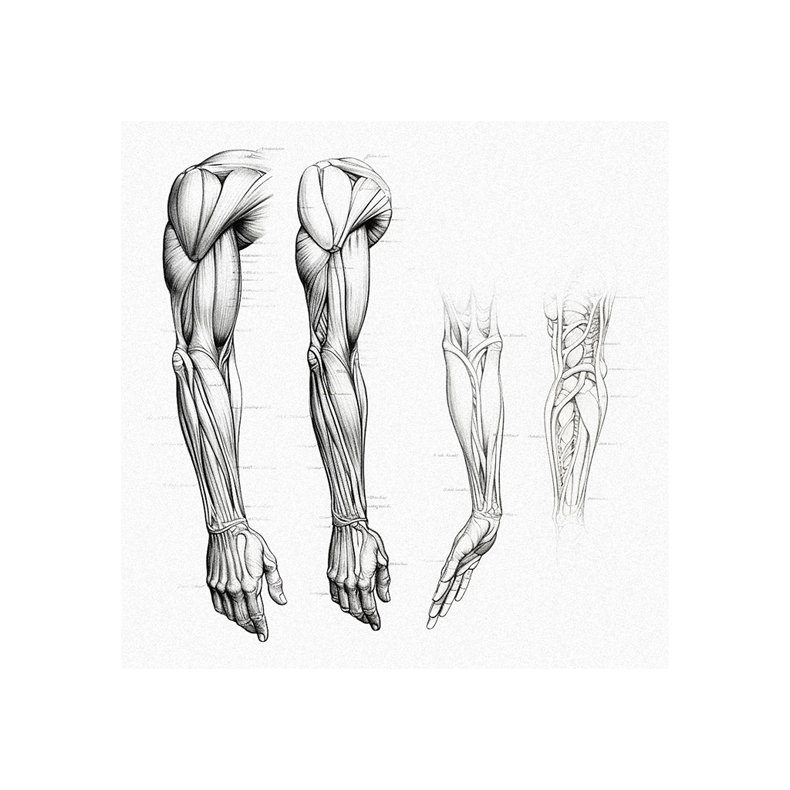As an artist, I’ve always been fascinated by the human form. It’s a complex puzzle of bones and muscles that gives life and energy to every pose we draw. Understanding muscle structures is crucial- adding depth and realism to our figure drawings.
From feeling the movement in our bodies and tracing finished artworks to studying anatomical references, there’s a lot we can do to learn about muscle anatomy. And it all starts with getting to know the skeleton; its bony landmarks are key!
The head, rib cage, and pelvis play a significant role in body balance and determine how muscles will look on paper. So, let’s dive into this fascinating world of muscle origin, insertion, function, antagonist, and form.
By practicing anatomy tracing or even inventing muscles from imagination, we can master these techniques for creating dynamic figure drawings.
Muscle Anatomy Basics
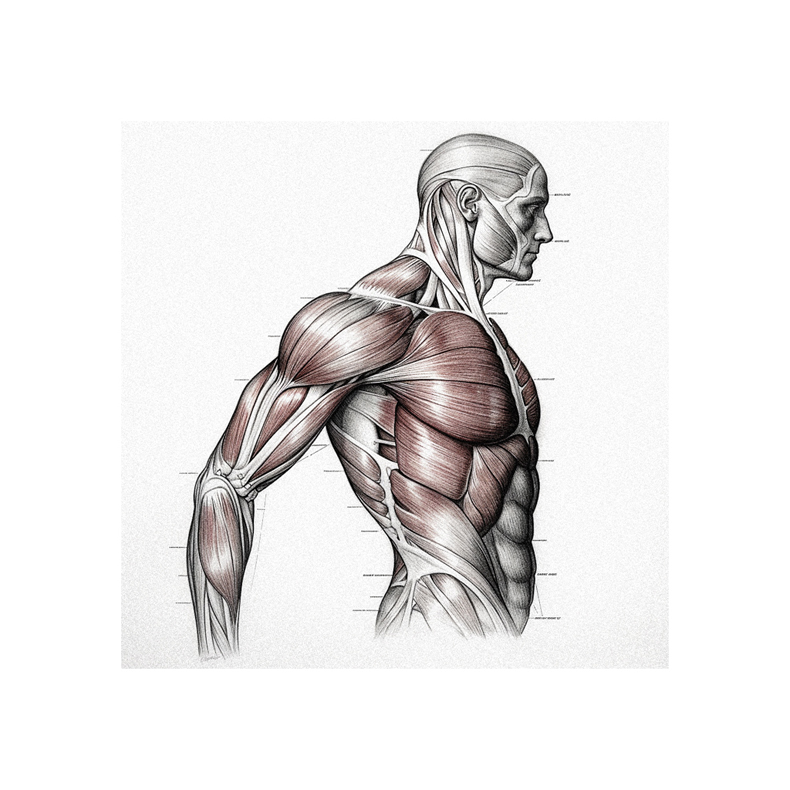
Understanding the basics of muscle anatomy isn’t just about science, it’s an artist’s secret weapon for drawing more realistic and expressive figures. It’s not enough to know that muscles exist; I’ve learned that you need to understand their location, how they connect, and how they change shape when in motion.
This knowledge helps me bring a sense of tension, relaxation, and energy into my drawings. To make my figures look real, I don’t rely on medical-looking charts but focus on significant muscles under the skin. I study their shapes and interconnections for better foreshortening.
What’s fascinating is that neighboring muscles with similar functions can be grouped when relaxed – an excellent tip for simplifying complex poses.
Importance of Skeleton

The skeleton, often called nature’s sculpture, provides a framework crucial in maintaining balance and proportion when bringing life to your art. It’s the backbone (no pun intended) of any good figure drawing.
First off, bony landmarks are vital. They’re key spots on the body that help you identify where exactly the skeleton sits beneath the skin.
Then we have our ‘big three’: The head, rib cage, and pelvis. These main masses determine body balance. Any slight misalignment can throw off a pose completely.
Knowing these skeletal basics is essential before delving into muscles. After all, they offer anchor points for muscle origin and insertion. So get familiar with them – your future drawings will thank you!
Bony Landmarks
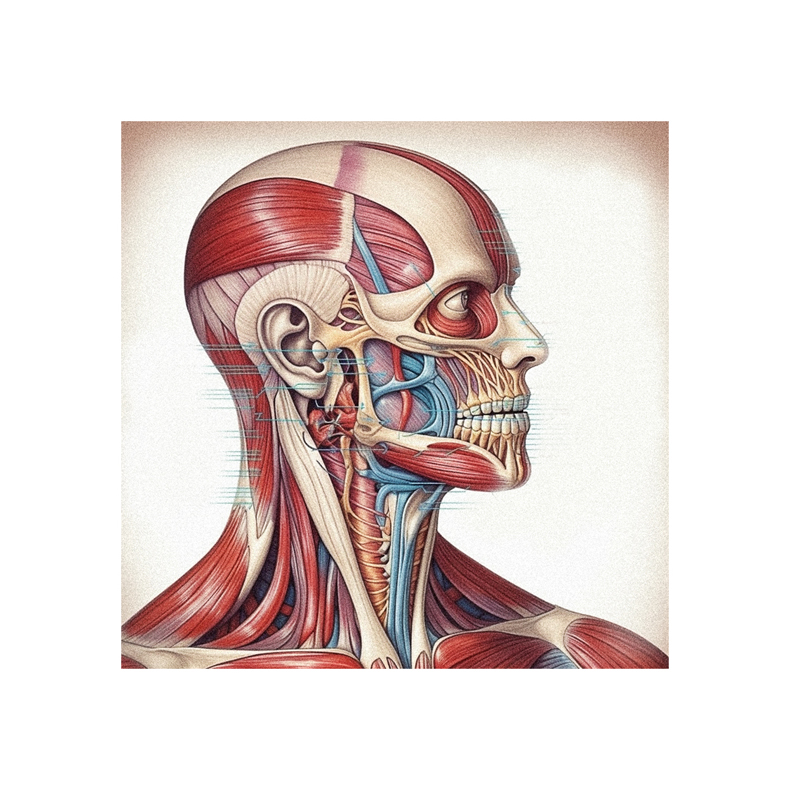
It’s vital to get to grips with bony landmarks – these key spots on our body that reveal where the skeleton sits beneath the skin. These points act as guides, helping me correctly position everything when sketching a human figure. They’re like my map, showing me where muscles connect and how they wrap around the bones.
Landmarks can be found all over the body – at joints, along bones, and even in areas you might not expect like the abdomen or back. And what’s more? They’re consistent across all bodies! That makes them dependable reference points for drawings.
Mastering these bony landmarks has done wonders for my art. It’s helped me capture proportions accurately and given my figures a real sense of believability and structure.
Main Masses of the Body
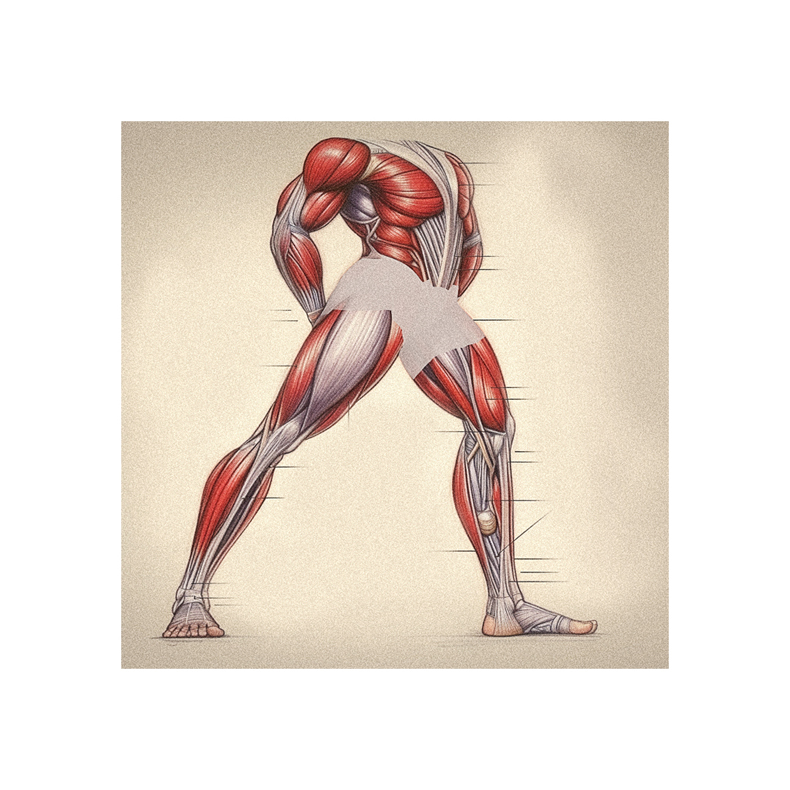
When sketching a human body, paying close attention to the head, rib cage, and pelvis can significantly improve the balance and realism in your art. These main masses determine the overall structure of any pose.
- The head is our starting point when drawing figures; its size helps establish other proportions.
- The rib cage should be about one-and-a-half head heights tall and have roughly the same depth as the head. It serves as a primary support for most upper body muscles.
- Lastly, we have the pelvis approximately as wide as the rib cage and just about as tall as your figure’s head height.
Remember, understanding how these masses relate to each other spatially will give your figure drawings a strong sense of dimensionality and realism!
Studying Muscle Function
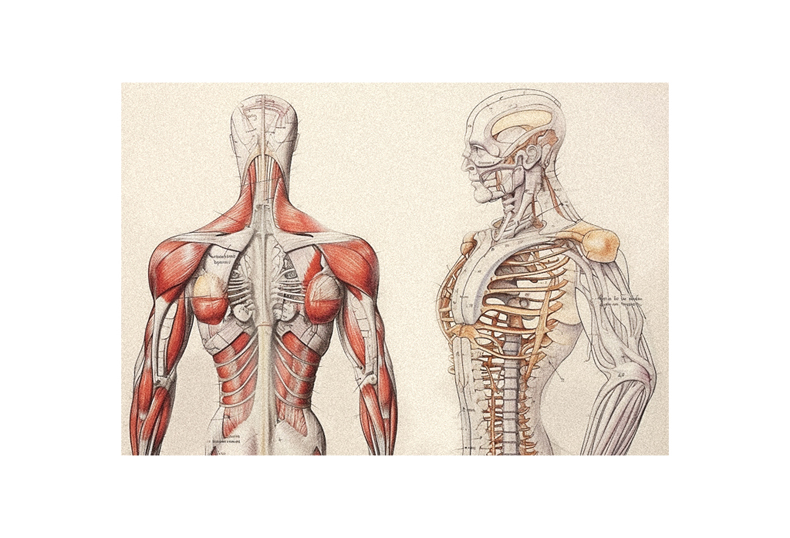
Diving into anatomy and understanding how each part of our body moves and functions can significantly elevate your artistry. It’s crucial to study muscle origin, insertion, function, antagonist, and form to master muscles for figure drawing.
When a muscle contracts, it pulls the insertion closer to the origin. An antagonist is needed, however, to stretch them back out. Muscles that have similar functions are often grouped when they’re relaxed.
Tendons play a vital role, too; they attach muscle to bone and appear as flat depressions or furrows on our bodies. The length of these tendons versus the length of the muscle directly affects how muscles look in drawings.
And with practice, you can invent muscles from your imagination!
Muscle Contraction and Antagonists
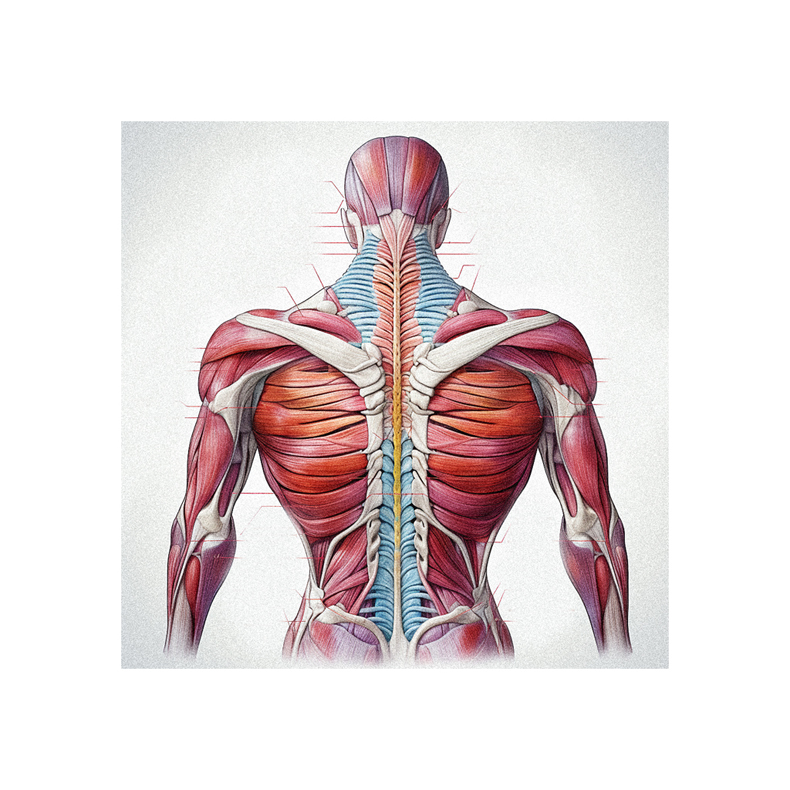
Understanding the play of contraction and relaxation in our body’s fibers is key to bringing life-like movement into your sketches. It’s fascinating how muscles work together to allow us to move. They contract, pulling their insertion point closer to their origin, enabling motion. But they can’t do this alone – they need an antagonist muscle that stretches them back out.
To capture this dynamism in the drawing:
- Understand the pairings of muscles: Each has its antagonist that allows for a balanced movement.
- Study muscle movements: Observe how flexing one muscle extends another.
- Pay attention to tension and relaxation: Tense muscles bulge while relaxed ones flatten.
By appreciating these complexities, you’ll create more realistic depictions of human form and motion in your artistry.
Grouping Similar Muscles
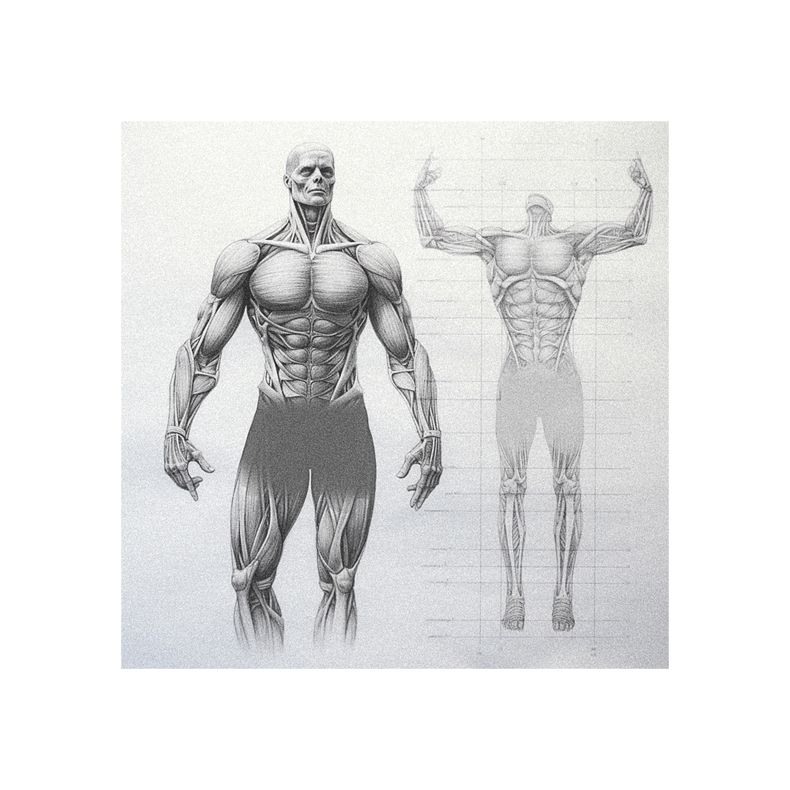
As you delve into the intricacies of human anatomy, you’ll find that neighboring fibers with similar functions can often be grouped, significantly when relaxed. This understanding can simplify drawing the complexities of muscular structures.
For example, muscles in our arms, like the biceps and triceps, function in tandem to allow bending and straightening movements. When relaxed, they appear as a singular mass rather than individual units.
This grouping doesn’t mean ignoring distinct muscle shapes. It’s about grasping how different muscles harmoniously work together to create motion. Observing this interaction helps us paint a realistic picture of human anatomy.
So with every stroke, remember – it’s not just about capturing each muscle accurately but also showcasing their collective synergy!
Tendons and Muscle Appearance
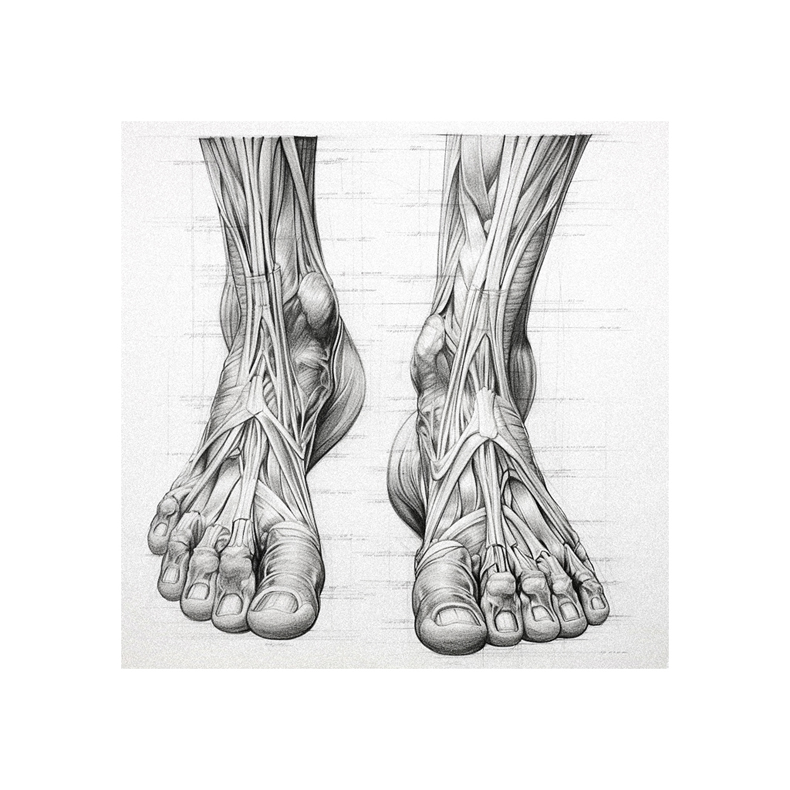
We can’t overlook the role of tendons, which attach our fibers to bones and significantly influence their appearance. They often look like flat depressions or furrows and are more visible in certain poses than others.
Their presence is vital because they give our muscles their unique shape and form by determining the length of each muscle. Plus, it’s not just about how long a muscle appears to be; it’s also about its relative length compared to its tendon.
Understanding the relationship between muscles and tendons allows us to create more accurate drawings:
- If a muscle’s tendon is short compared to the muscle, it will appear bulky.
- Conversely, if the tendon is long compared to the muscle, it will seem elongated.
We can better illustrate human anatomy by grasping these dynamics in our artwork.
Muscle Length and Tendon Length
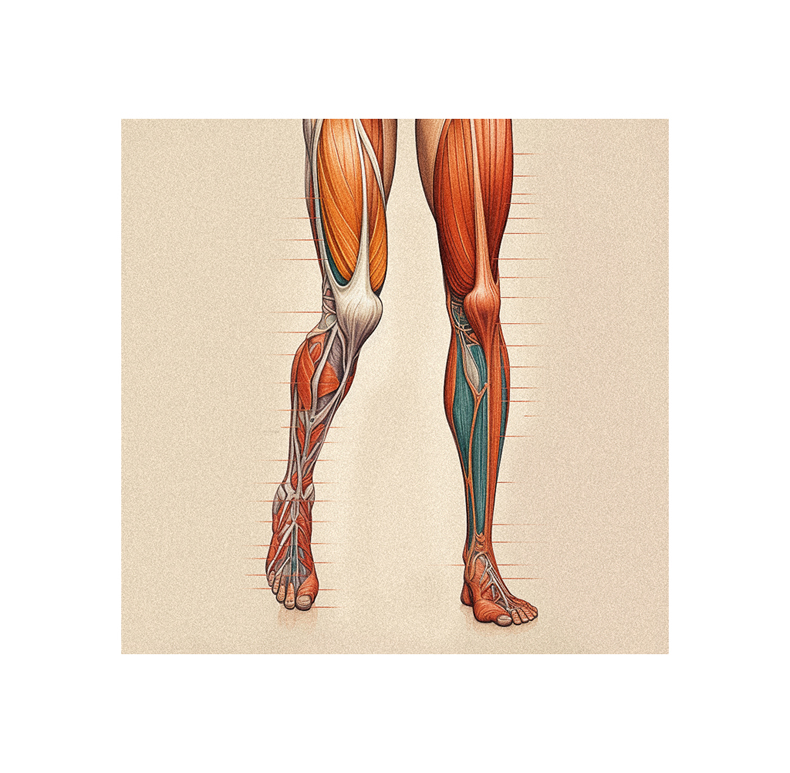
When sketching the human form, you’ll find that a muscle’s length of its tendon tremendously impacts how it appears on paper. Muscles with long tendons look different from those with shorter ones.
When a muscle has a long tendon, less of the actual muscle is visible, and more emphasis is placed on the tendinous structures. This can make these muscles appear leaner and longer. On the other hand, when the tendon is short, and the muscle fibers make up most of the structure, these muscles often appear bulkier and shorter.
Understanding this connection between muscle length and tendon length helps me better visualize their roles in movement and posture. It provides an essential guide for detailing musculature realistically in my figure drawings.
Practicing Anatomy Tracing
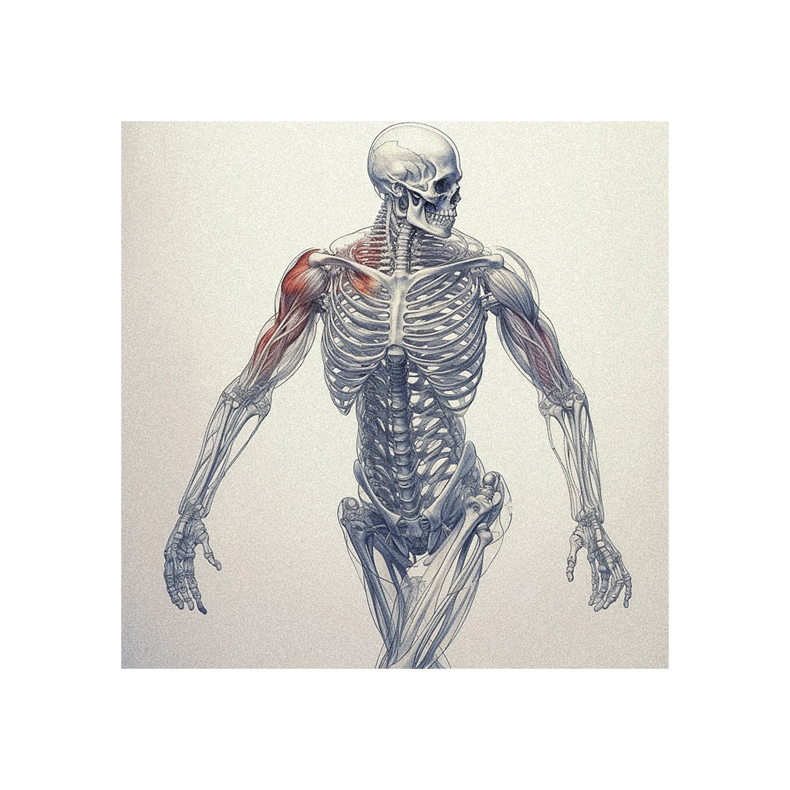
To hone your understanding of the human body, it’s crucial to practice anatomy tracing regularly. This technique involves laying a sheet of paper over a diagram or image and tracing the outlines of the muscles and bones to get a feel for their shapes and relationships.
- Repetition: The more you trace, the more your hand learns to represent these structures accurately.
- Focus on form: It’s not just about lines but also about understanding muscle forms.
- Experiment with materials: Try different types of paper or digital tools to trace.
- Challenge yourself: Trace complex poses or muscle groups you find difficult.
- Consistency is key: Make this exercise part of your daily drawing routine.
Remember: Tracing is a tool for learning, not a result!
Distinct Portions of Pectoralis Major
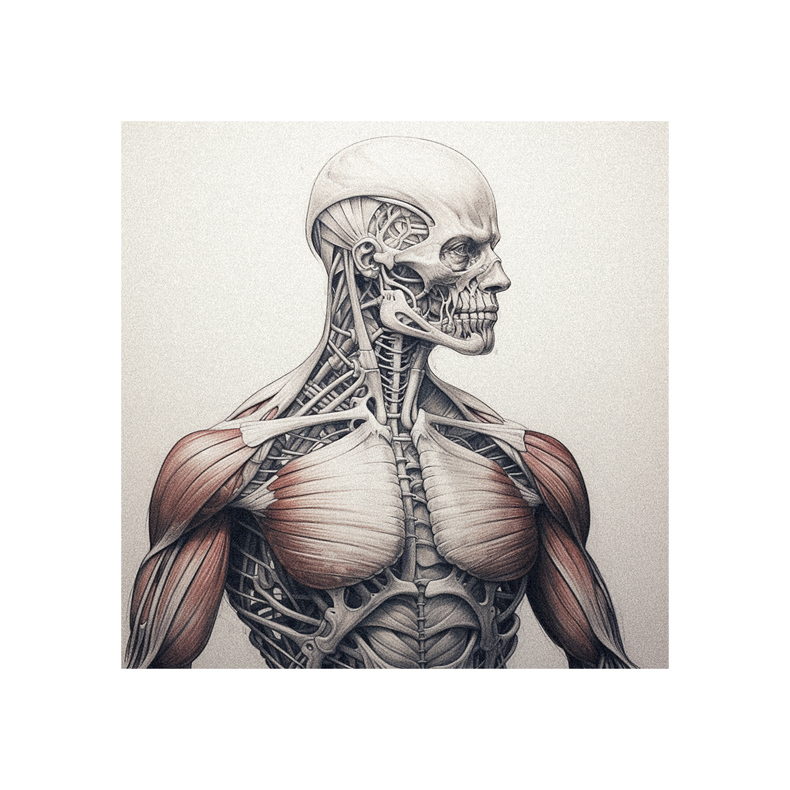
Isn’t it fascinating how the pectoralis major, a key player in our upper body strength, comprises three distinct portions that form a beautiful folding fan pattern?
This grouping of muscles is central to many arm and shoulder movements. The upper portion (clavicular part) attaches to the collarbone, while the lower two (sternocostal and abdominal) attach to the sternum and abdomen.
Understanding this structure helps me create more accurate and dynamic poses when drawing figures. Also, when considering female figures, I remember that breasts should communicate gravity and hug the surrounding skeleton – they aren’t separate entities but part of an integrated whole.
Studying muscle structures like these deeply enriches my figure drawings with realism and life-like energy!
Communicating Gravity with Breasts
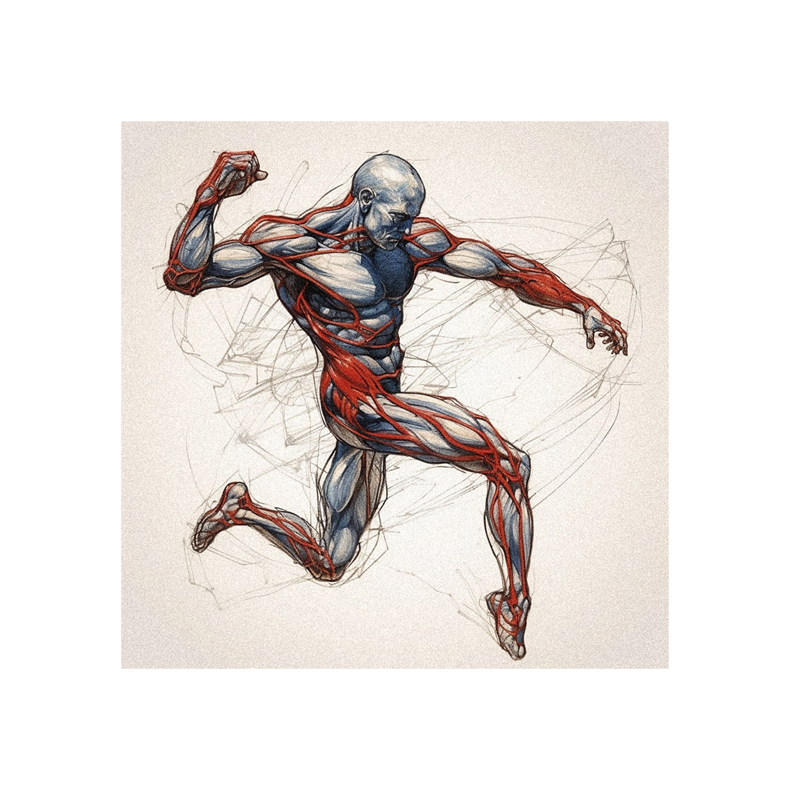
After diving into the complexities of the pectoralis major, it’s evident that every muscle has its intricacies.
Now, let’s shift gears and talk about a topic that can be tricky for some artists – rendering breasts on a figure drawing. Despite being made primarily of fatty tissue rather than muscle, they still need to follow the laws of physics.
In my experience, it’s crucial to remember that breasts have weight and are affected by gravity just like any other part of the human body. They should drape naturally over the underlying skeletal structure, specifically hugging the shape of the rib cage and pectoral muscles. Their position will change depending on whether your subject is standing up straight or bending over.
Understanding this helps create more realistic figure drawings.
Follow us on Pinterest for more tips, tutorials, and artist reviews!

